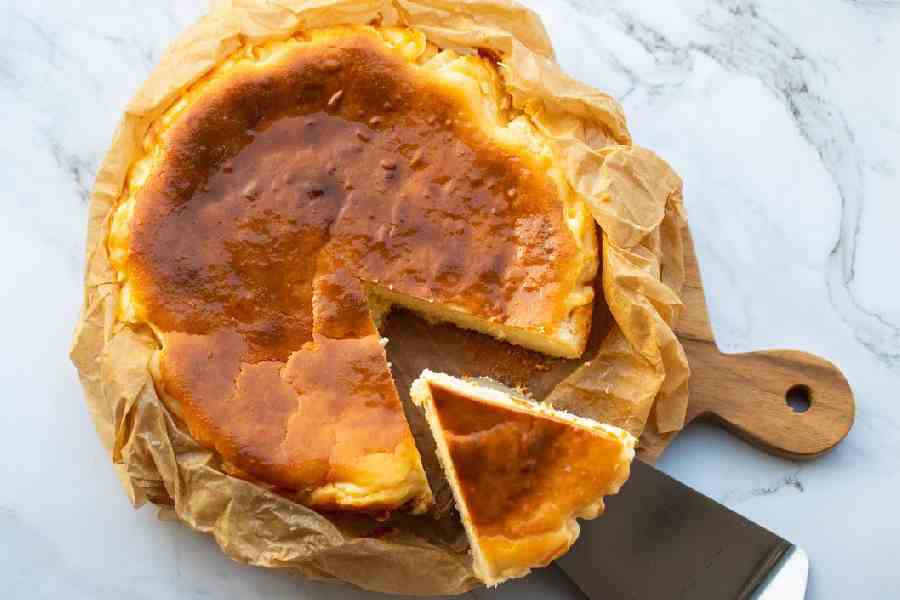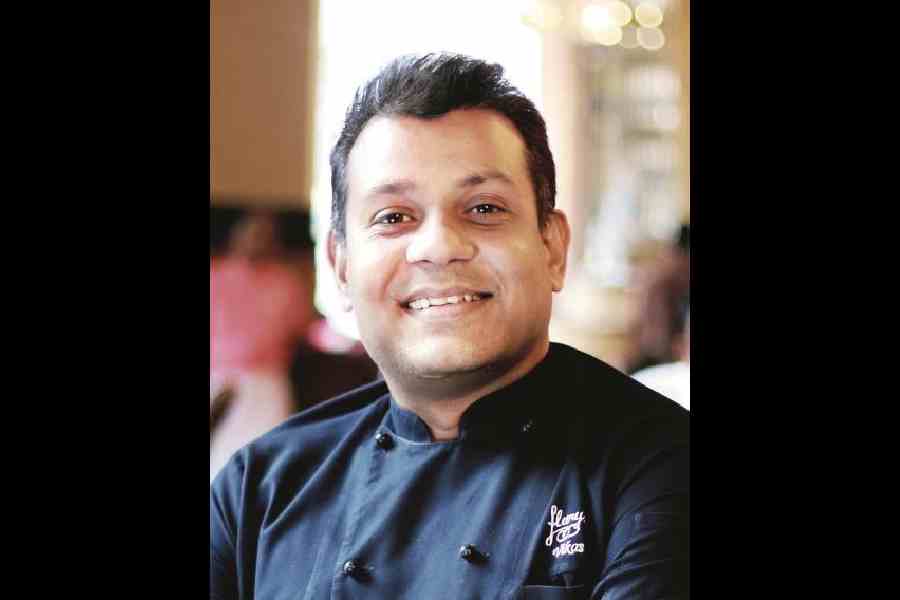I remember that the first time that ever I heard of Valentine’s Day, I was in school, in class IX and there were these ‘macho’ boys (read rich and spoilt) strutting around with red roses that most of them had, ironically, plucked from the school garden itself. They were going around vociferously declaring that they will give these to their ‘valentines’ and they all had selected who those were from within the extremely limited choices available.
Unfortunately for them, the school gardener found out about their misadventure, reported them to the headmaster, and their short-lived valentine super effort ended with all of them folks getting a loveless rustication and while the red roses were quickly confiscated and put up in the school library, the redness of the roses were quickly transferred to their shamefaced cheeks and relentlessly caned posteriors.
Be that as it may, I decided to find out more. In the good old days sans the all-knowing internet and parent-child communication mostly strictly limited to ‘need-to-know’ basis, any information with a remote tinge of ‘girl-boy’ connotation was best avoided, as went the general prevalence. As it transpired, I went on to ask my question to the most unassuming girl, one among the ‘modern’ types and immediately was faced with a quizzing, almost scared look.
But I did get my answer. And I did manage to have a girl blush, for the first time ever. It’s a day for couples, see, she said amidst glancing around for classmates that were too keen to read between lines, and when you want a girl to be your girlfriend, you wish her and give her a rose. Armed with my newfound wisdom and not knowing exactly what to do with it, I went on wondering if I’d ever be able to put that to practical use. Not in a hurry, I’d later find out.
Cut to now, as February approaches, the world dons shades of red and pink in anticipation of Valentine’s Day — a celebration of love and affection. While roses, chocolates and romantic dinners are common staples, various cultures around the world add their own unique flavours to this special day.
In the midst of this global celebration of love, we at Flurys get busy crafting exciting Valentine’s Day menus that cater to the romantic palate. We have a unique Valentine’s day offering this year too and hope to see some of you there. While all celebrations have different observances, based on the region and the culture, the festival of Valentine’s Day also comes with its own set of unique customs, let us delve into a few of those.
In Wales, the celebration kicks off a bit earlier with Saint Dwynwen’s Day on January 25. Dwynwen, the Welsh patron saint of lovers, is honoured with traditional Welsh cakes called “pice ar y maen” and the exchange of intricately carved love spoons. On Valentine’s Day itself, Welsh couples often exchange love spoons that look somewhat like carved wooden keys as a symbol of their commitment and affection. The intricate designs on these spoons hold meanings that vary from keys to signify a home together to wheels symbolizing support.
In Japan, the focus is not solely on romantic love but also on friendship. Valentine’s Day is celebrated on two separate occasions — February 14 and March 14, known as White Day. On the first day, women traditionally present chocolates to men as a token of their affection. A month later, men reciprocate the gesture with gifts of equal or greater value. It’s a unique way to extend the celebration and emphasise the importance of both giving and receiving in relationships.
Moving to The Philippines, Valentine’s Day is a day of mass weddings. In recent years, local government officials have organised mass wedding ceremonies, where hundreds of couples gather to tie the knot simultaneously. This communal celebration not only fosters a sense of unity, but also makes the day even more memorable for the newlyweds.
In Denmark, the celebration takes a humorous turn with the exchange of ‘gaekkebrev’ or joking letters. Men send anonymous love letters to their beloved, but instead of signing their name, they write dots corresponding to the number of letters in their name. If the woman correctly guesses the sender, she receives an Easter egg in return. It’s a light-hearted and playful way to express affection, adding an element of mystery to the romantic tradition.
South Korea takes a unique approach by celebrating not just Valentine’s Day but also Black Day on April 14. On Valentine’s Day, women present chocolates to men, and on White Day, March 14, men reciprocate with candies. However, those who don’t receive gifts on either occasion gather on Black Day to eat jajangmyeon, a black bean noodle dish. It’s a way for singles to commiserate and turn what might be a lonely day into a social event.
In Ghana, the celebration of love extends beyond just couples. February 14 is known as National Chocolate Day, and Ghanaians celebrate by exchanging locally produced chocolates. This unique twist not only promotes the country’s cocoa industry, but also encourages the sharing of sweet treats among friends and family.
As we explore these diverse Valentine’s Day traditions from around the world, it’s worth taking a moment to appreciate how love knows no borders. And in the heart of Calcutta, Flurys has been embracing this sentiment by curating enchanting Valentine’s Day menus year after year.
From heart-shaped pastries to decadent chocolate desserts, Flurys pays homage to the universal language of love through its culinary creations. The menu is carefully curated to cater to diverse tastes, mirroring the cultural tapestry of the city itself. Couples can indulge in a gastronomic journey that reflects the essence of Kolkata while savouring the timeless tradition of celebrating love.
Valentine’s Day, once a Western observance, has significantly surged in popularity within India in recent years, driven by various factors. The advent of globalisation has facilitated the permeation of Western cultural practices into Indian society, with Valentine’s Day being no exception. This cultural exchange is bolstered by the widespread dissemination of Western ideals of romance through mass media channels like television, movies, and the internet.
Moreover, the commercialization of Valentine’s Day by retailers and businesses across the country has further propelled its growth, with sales of greeting cards, flowers, chocolates, and special promotions in restaurants and cafes becoming ubiquitous.
Alongside economic influences, changing attitudes towards relationships and expressions of love among Indian youth, particularly in urban areas, have contributed to the adoption of Valentine’s Day as a day to celebrate affection and romance.
Social media platforms play a pivotal role in amplifying the hype surrounding Valentine’s Day, with users inundating feeds with posts, photos and hashtags related to the occasion. Despite criticism from conservative groups who view it as a Western import conflicting with traditional Indian values, Valentine’s Day continues to thrive as a widely embraced celebration, buoyed by its romanticised portrayal in Bollywood movies and Indian television.
In essence, Valentine’s Day in India represents a convergence of global influences, commercial interests, shifting societal norms, and the enduring human desire to express love and affection towards another. In a world where traditions may vary and customs may differ, the celebration of love remains a constant. Whether it’s the exchange of love spoons in Wales, the playful gaekkebrev in Denmark, or the mass weddings in the Philippines, the essence of Valentine’s Day lies in the joy of expressing affection and building connections.
And as the sun sets over the city of Calcutta, couples at Flurys will be immersed in an atmosphere that transcends borders — a celebration of love that echoes the sentiments of people across the globe. So, as we embrace the diverse rituals that make Valentine’s Day unique, let’s also appreciate all food establishments that add a touch of culinary magic to our celebrations, creating memories that linger long after the day has passed.
BASQUE CHEESECAKE
As it turns out, I am writing this column after a long gap, and thought should give out the recipe of something truly special, one that I will want to make and serve to a loved one myself. Cheesecakes are much in fad these days, and for good reason. Luscious, decadent and versatile, this dessert is easy to make at home, you just need to follow the recipe carefully. Marrying the elements of caramel and cream, this is my recipe of a delightful Basque Cheesecake, served with a velvety caramel sauce.
INGREDIENTS

#For the cheesecake
l Cream cheese: 500g at room temperature
l Sugar: 200g
l Eggs: 4, at room temperature
l Vanilla extract: 2ml
l Heavy cream: 200ml
l Flour: 2tbsp
l Salt: A pinch
#For the caramel sauce 100g sugar
l Butter: 50g
l Heavy cream: 100ml
l Salt: A pinch
METHOD
l Preheat the oven to 200°C (390°F). Grease a 9-inch spring form pan and line the bottom and sides with parchment paper.
l In a large mixing bowl, beat the cream cheese and sugar together until smooth and creamy.
l Add the eggs one at a time, beating well after each addition. Stir in the vanilla extract.
l Gradually add the heavy cream, flour, and pinch of salt, mixing until everything is well combined and smooth.
l Pour the batter into the prepared pan and smooth the top with a spatula.
l Bake in the preheated oven for about 50-60 minutes, or until the top is golden brown and the centre is set but slightly jiggly. The top should be very dark but not burnt.
l Remove the cheesecake from the oven and let it cool completely in the pan. Once cooled, refrigerate for at least 4 hours or overnight.
l To make the caramel sauce, heat the sugar in a saucepan over medium heat, stirring constantly with a wooden spoon until it melts and turns into a golden caramel colour.
l Carefully add the butter and stir until melted and well combined. Be cautious as the mixture may bubble up.
l Slowly pour in the heavy cream while stirring continuously until the sauce is smooth and thickened. Remove from heat and stir in a pinch of salt. Let it cool slightly.
l To serve, remove the cheesecake from the pan, drizzle with the caramel sauce, and slice.l Enjoy your delicious caramel Basque cheesecake with the one you love!
